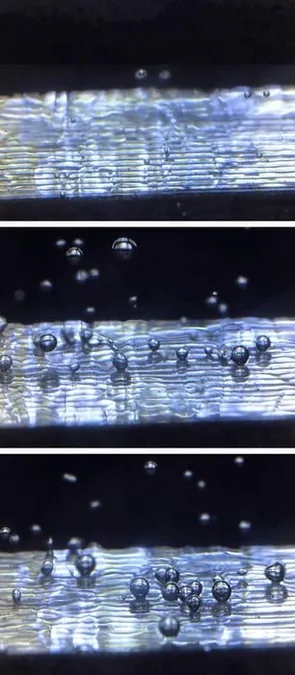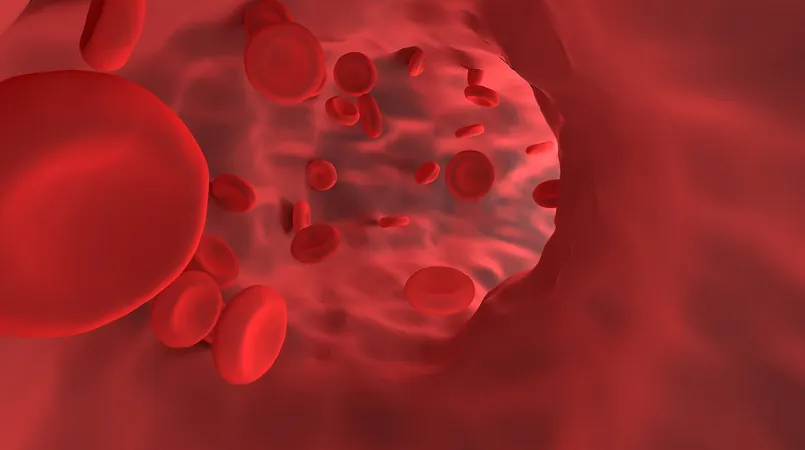
Unlocking Space Exploration: How Parabolic Flights Can Revolutionize Electrolyzer Technology for the Moon and Mars
2025-08-27
Author: Nur
Pushing the Boundaries of Space Exploration
What if parabolic flights could hold the key to advancing human missions to the Moon and Mars? A recent $500,000 grant to the Mars Atmospheric Reactor for Synthesis of Consumables (MARS-C) project from NASA's TechLeap Prize aims to do just that, diving into the capabilities of electrolyzers to revolutionize our presence beyond Earth.
The Science Behind Parabolic Flights
Parabolic flights are a staple in space research, providing vital simulations of microgravity that astronauts and scientists experience in actual space. During these flights, an aircraft ascends sharply and then arches down, creating up to 20 seconds of weightlessness. With each mission performing around 15-20 parabolas, extensive data is gathered, which is crucial for Earth-based research that mimics conditions in space.
The Vision of Space Innovation
Kevin Supak, Program Manager at the Southwest Research Institute, emphasizes humans' innate desire to expand possibilities. He believes that tackling unique challenges in space can catalyze technological advancements with profound impacts on daily life. Permanent settlements on celestial bodies could lead to groundbreaking discoveries.
Learning from the Past to Build the Future
This new research follows prior work from 2024, where Supak and colleagues teamed with Texas A&M University to analyze boiling behaviors in reduced gravity. That research focused on understanding how different materials interact with boiling liquids on surfaces resembling those of the Moon and Mars.
How Electrolyzers Work and Their Role in Space
Electrolyzers are fascinating devices that split water into hydrogen and oxygen using electricity—essential for both life support and fuel in space. Currently utilized on the International Space Station (ISS) for breathable oxygen production, these systems could also be pivotal on future Moon and Mars missions, eliminating the need for oxygen resupplies from Earth.
Overcoming Challenges in Reduced Gravity
Supak notes that working in partial gravity environments, like those on the Moon or Mars, presents unique challenges. The buoyancy of gas bubbles behaves differently than on Earth, complicating chemical reactions. Therefore, this research aims to bridge the knowledge gap in how these processes work in low-gravity settings.
The Future of Moon and Mars Exploration Awaits
So, how will electrolyzers shape our future lunar and Martian missions? With a grounded focus on innovation and research, the potential for breakthroughs is immense. As we continue to look to the stars, let’s keep the spirit of inquiry alive – after all, that's what science is all about!



 Brasil (PT)
Brasil (PT)
 Canada (EN)
Canada (EN)
 Chile (ES)
Chile (ES)
 Česko (CS)
Česko (CS)
 대한민국 (KO)
대한민국 (KO)
 España (ES)
España (ES)
 France (FR)
France (FR)
 Hong Kong (EN)
Hong Kong (EN)
 Italia (IT)
Italia (IT)
 日本 (JA)
日本 (JA)
 Magyarország (HU)
Magyarország (HU)
 Norge (NO)
Norge (NO)
 Polska (PL)
Polska (PL)
 Schweiz (DE)
Schweiz (DE)
 Singapore (EN)
Singapore (EN)
 Sverige (SV)
Sverige (SV)
 Suomi (FI)
Suomi (FI)
 Türkiye (TR)
Türkiye (TR)
 الإمارات العربية المتحدة (AR)
الإمارات العربية المتحدة (AR)